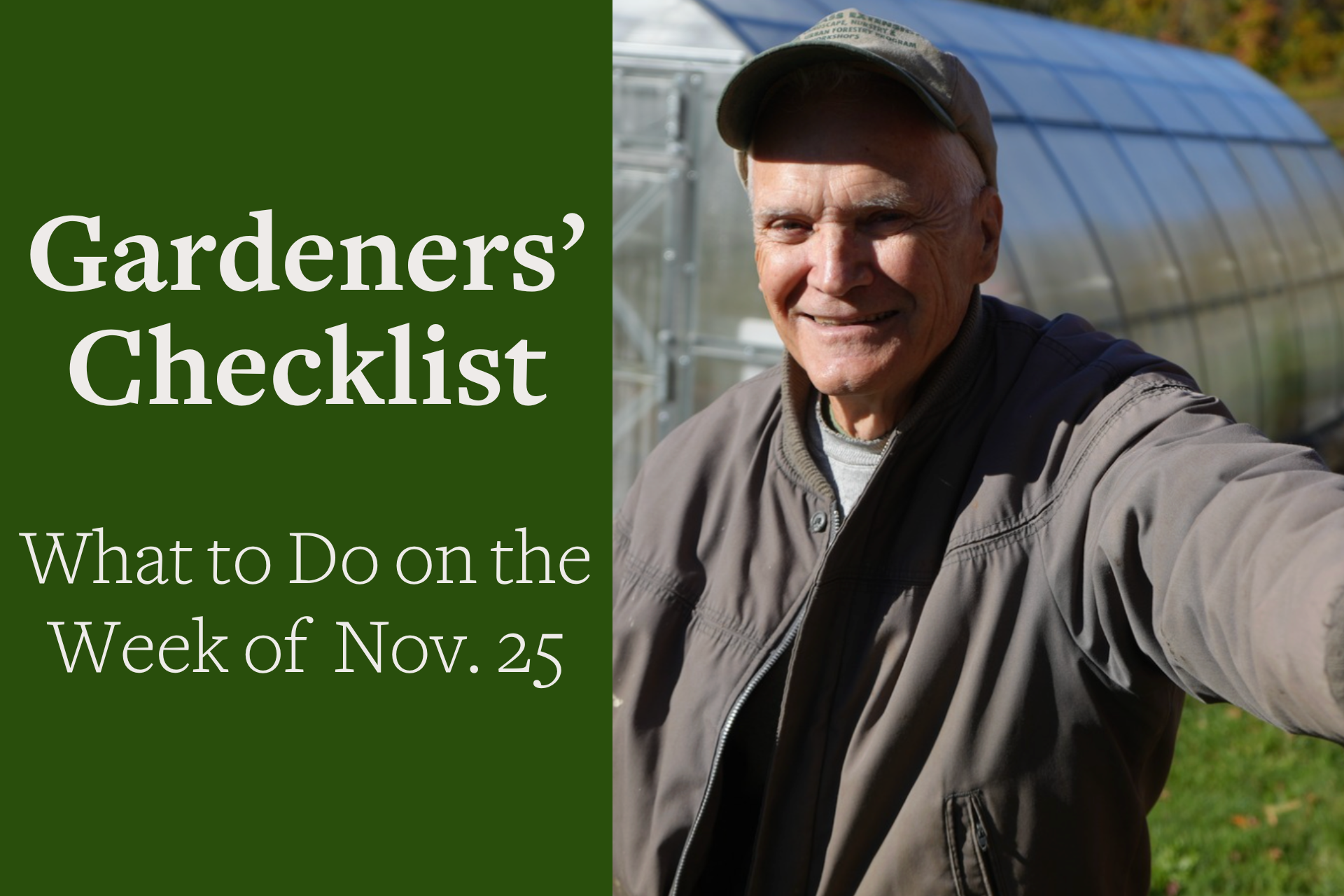You are here
Gardeners Checklist: Here Is What to Do on the Week of Nov. 25
Gardeners Checklist: Here Is What to Do on the Week of Nov. 25
By Ron Kujawski
* Apply winter mulches to perennial flower borders as soon as the ground freezes. Use only loose textured materials that will not compact and restrict drainage. My preference for winter mulch around dormant perennials is pine needles, but shredded leaves, partially composted wood chips or bark, and pine boughs are other good options.
* Saw an inch off the bottom of the stem of your cut Christmas tree when bringing it into the house. This will improve uptake of water by the tree and extend its needle retention. I was going to say “extend its health,” but how healthy is a tree that has been severed from its root system? Yes, I lie awake at night contemplating such things.
* Remove unsightly wasp nests from eaves and other locations. At this time of year, there is little risk that there are any live wasps remaining in these outdoor paper nests.
* Be careful not to distort the shape and symmetry of evergreen trees and shrubs when cutting branches to use in holiday decorations.
* Think “gardening books” when mulling over gifts for the gardeners among your family and friends. May I recommend “Week-by-Week Vegetable Gardener’s Handbook”? You may be familiar with one of the authors. Yes, this is crass self-promotion, but I’m told it must be done.
*
It’s interesting how all the tranquility and goodwill associated with Thanksgiving is now replaced with a frantic race to get ready for Christmas. There’s the shopping, bargain hunters pushing and shoving, tempers flaring, crowded parking lots, etc. How can one cope with such chaos and maintain one's physical and mental health? I don’t know – not what you wanted to hear, I’m sure. But I do know that numerous studies have shown that embellishing your indoor surroundings with house plants can improve your mental and physical health. Studies in hospitals found that patients in rooms with plants experienced reduced blood pressure and less anxiety than those in rooms without plants. Similar studies in office environments discovered that workers in rooms with indoor plants had fewer colds, sore throats, headaches, and other ailments. Students in classrooms laden with plants were found to be more attentive. It’s assumed that the same benefits experienced in these settings should also apply to home environments. House plants that are particularly beneficial from a health standpoint are: spider plant, corn plant (Dracaena), peace lily, philodendrons, English ivy, and snake plant. There are others, but including these in your home will get you off to a healthy start this holiday season.
Ron Kujawski began gardening at an early age on his family's onion farm in upstate New York. Although now retired, he spent most of his career teaching at the UMass Extension Service. He serves on Berkshire Botanical Garden’s Horticulture Advisory Committee. His book, Week-by-Week Vegetable Gardener’s Handbook, is available here.
Help Our Garden Grow!
Your donation helps us to educate and inspire visitors of all ages on the art and science of gardening and the preservation of our environment.
All donations are 100 percent tax deductible.


